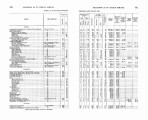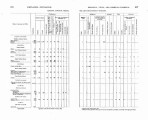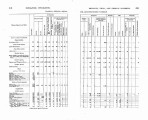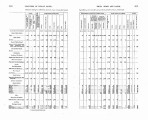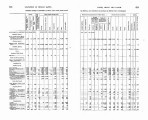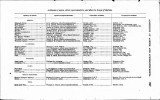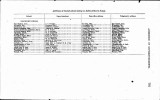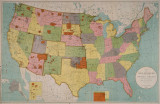| OCR Text |
Show 62 COMMISSIONER OF INDIAN AFFAIRS. ments upon the relinquished lands. The policy of allowing Indians upon the public domain to relinquish their allotments or homesteads to whites for a consideration and take other lands in lieu thereof is discouraged because it would lead to speculation by the Indians in their allotment and homestead rights. Peculiar cironmstances in the case of these Indians decided this Office and the Department to allow the allottees to relinquish their lands to the United States and receive a consideration for the improvements thereon, paid by the white contestant. Sioux ceded lands.-lt has been the policy of the Department, as stated in my last annual report, to encourage the Indians who received allotments within the Sioux ceded tract, South Dakota, under the Sioux act of March 2, 1889 (25 Stats., 888), to relinquish such allotments aid to remove to their respective reservations and take allotments there. The Indians have done so from time to time and they are still mak-ing relinquishments occasionally. For this reason none of these nonreservation allotment& have been submitted to the Department for approval. That action will be taken as soon as it is ascertained that no other Indians within the Sioux ceded tract desire to relinquish their allotments. SALES OF INDIAN LANDS. Inherited lands.-The first sale of inherited lands under section 7 of the act of May 27, 1902, and the amended rules of October 4, 1902, prescribed thereunder, was approved March 4, 1903. From that date to September 15,1903, as stated in the last annual report of this Office, there were sold 44,493.99 acres for the aggregate sum of $757,173.25, being an average of 6,810.30 acres per month. From September 15, 1903, to June 30, 1904, 'the approved sales have averaged 8,182 acres per month, being an increase of 20 per cent. The average price obtained prior to September 15, 1903, was $17.01 per acre, and since that date to Jnnc 30,1004, it has been $16.83 per acre, as will be aeen from the table on page 66. From reports of agents and special agents it appears that in most cases fair prices are being received for the lands. It is noted, how-ever, that the sales are made to a very great extent to the same per-sons, indicating that the lands are generally being purchased for their speculativevalues, and not directly by those who want them for homes, the Indian owners thereby losing the difference between the speculative value and the value of the lands to the homeseeker. As suggested in my last year's report, this condition could be changed by disposing of the lands on time, the consideration money to be paid in annual install-ments covering a period of from ten to fifteen years. Under present conditions, so far as the Indian is concerned, the sale of these landds produces few beneficial results, but, on the contrary, has |






















































































































































































































